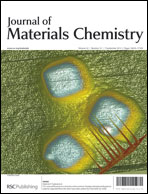Due to their large surface-area-to-volume ratio as well as their interesting intrinsic optical and electronic properties, ZnO 1D nanostructures are part of the few dominant materials for nanotechnology. In this article, we compare two different routes of using nanosphere lithography for manufacturing of well-aligned, density-controlled ZnO nanowires by low-temperature hydrothermal growth. The first route uses the colloidal mask as a template for the patterned growth of the nanowires, while in the second route, the nanospheres act as a mask to pattern the seed layer. SEM and XRD characterizations are performed on samples manufactured by both routes and evidence patterned well-aligned nanowires with high c-axis texturing in the first synthetic route. Oriented growth is less pronounced in the second route, as well as the ability to adsorb dye. However, for the first route the dye loading measurements reveal that the amount of N-719 adsorbed is higher than on unpatterned ZnO nanowire films, highlighting an increased interface area. Reversible hydrophobicity to superhydrophilicity transition was observed and intelligently controlled by alternation of UV illumination and dark storage. This promising synthetic route opens exciting perspectives for the production of ZnO nanowire arrays with tunable density, wetting properties and enhanced adsorption properties.

You have access to this article
 Please wait while we load your content...
Something went wrong. Try again?
Please wait while we load your content...
Something went wrong. Try again?


 Please wait while we load your content...
Please wait while we load your content...